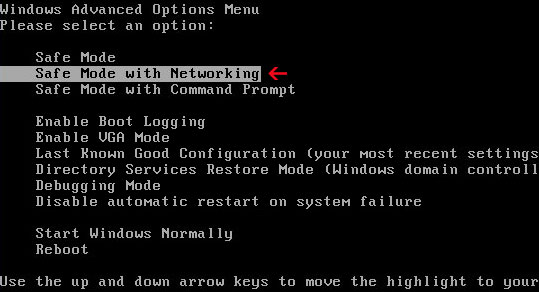
Disk OK and HDD OK are from the same family as My Disk and Memory Fixer. Scammers often use re-branded versions of the same piece of malware. Such rogue programs are typically distributed through the use of Trojans and other malicious software. The rogue program may be downloaded and installed without your knowledge or you may be prompted to install it from some place that you obviously should not have been visiting. One way or another, this is not the right way to distribute any software. Here are some of the fake error messages that you will probably see if your computer gets infected with Disk OK or HDD OK:
Critical Error
Damaged hard drive clusters detected. Private data is at risk.

Critical Error
A critical error has occurred while indexing data stored on hard drive. System restart required.

System Restore
The system has been restored after a critical error. Data integrity and hard drive integrity verification required.
Activation ReminderYou should also know that Disk OK or HDD OK won't delete your files or steal sensitive information. It's not that type of program. However, when your computer is infected with any type of malware there is a chance that you may end up with even more malware on your computer. That's why you should scan your computer with recommend anti-malware software just to make sure that there are no other viruses on your computer. Last, but not least, if you have already purchased this or any other rogue program, please contact your credit card company and dispute the charges. To remove Disk OK or HDD OK, please follow the steps in the instructions below. If you need help removing this rogue, please leave a comment. Helpful comments and related questions are also welcome. Please inform your friends and associates about this threat. Good luck and be safe online!
Disk OK Activation
Advanced module activation required to fix detected errors and performance issues. Please purchase Advanced Module license to activate this software and enable all features.
Disk OK removal instructions:
1. Download Process Explorer. (click the link and wait for few seconds, download will begin automatically)
2. End Disk OK or HDD OK processes, e.g. ifgHrdhftGndke.exe or HfgrK34HdnfHGe.exe.

3. Download TDSSKiller (free utility from Kaspersky Lab) and run it. Remove TDSS rootkit if exist.

4. Download free anti-malware software from the list below and run a full system scan.
NOTE: in some cases the rogue program may block anti-malware software. Before saving the selected program onto your computer, you may have to rename the installer to iexplore.exe or winlogon.exe With all of these tools, if running Windows 7 or Vista they MUST be run as administrator. Launch the program and follow the prompts. Don't forget to update the installed program before scanning.
5. New threats appear every day. In order to protect your PC from such (new) infections we strongly recommend you to use ESET Smart Security.
Disk OK removal instructions (in Safe Mode with Networking):
1. Reboot your computer is "Safe Mode with Networking". As the computer is booting tap the "F8 key" continuously which should bring up the "Windows Advanced Options Menu" as shown below. Use your arrow keys to move to "Safe Mode with Networking" and press Enter key. Read more detailed instructions here: http://www.computerhope.com/issues/chsafe.htm

NOTE: Login as the same user you were previously logged in with in the normal Windows mode.
2. Download free anti-malware software from the list below and run a full system scan.
NOTE: in some cases the rogue program may block anti-malware software. Before saving the selected program onto your computer, you may have to rename the installer to iexplore.exe or winlogon.exe With all of these tools, if running Windows 7 or Vista they MUST be run as administrator. Launch the program and follow the prompts. Don't forget to update the installed program before scanning.
3. New threats appear every day. In order to protect your PC from such (new) infections we strongly recommend you to use ESET Smart Security.
Disk OK associated files and registry values:
Files:
- %AllUsersProfile%\Application Data\[SET OF RANDOM CHARACTERS]
- %AllUsersProfile%\Application Data\[SET OF RANDOM CHARACTERS].dll
- %AllUsersProfile%\Application Data\[SET OF RANDOM CHARACTERS].exe
- %UsersProfile%\Desktop\Disk OK.lnk
- %UsersProfile%\Start Menu\Programs\Disk OK\
- %UsersProfile%\Start Menu\Programs\Disk OK\Disk OK.lnk
- %UsersProfile%\Start Menu\Programs\Disk OK\Uninstall Disk OK.lnk
C:\Documents and Settings\All Users (in Windows 2000/XP)
C:\Users\[UserName]\AppData\Roaming (in Windows Vista & Windows 7)
Registry values:
- HKEY_CURRENT_USER\Software\Microsoft\Windows\CurrentVersion\Run "[SET OF RANDOM CHARACTERS]"
- HKEY_CURRENT_USER\Software\Microsoft\Windows\CurrentVersion\Run "[SET OF RANDOM CHARACTERS].exe"
- HKEY_CURRENT_USER\Software\Microsoft\Windows\CurrentVersion\Policies\Associations "LowRiskFileTypes"='.zip;.rar;.nfo;.txt;.exe;.bat;.com;.cmd;.reg;.msi;.htm;.html;.gif;.bmp;.jpg;.avi;.mpg;.mpeg;.mov;.mp3;.m3u;.wav;.scr;'
- HKEY_CURRENT_USER\Software\Microsoft\Internet Explorer\Download "CheckExeSignatures" = "no"















0 comments:
Post a Comment